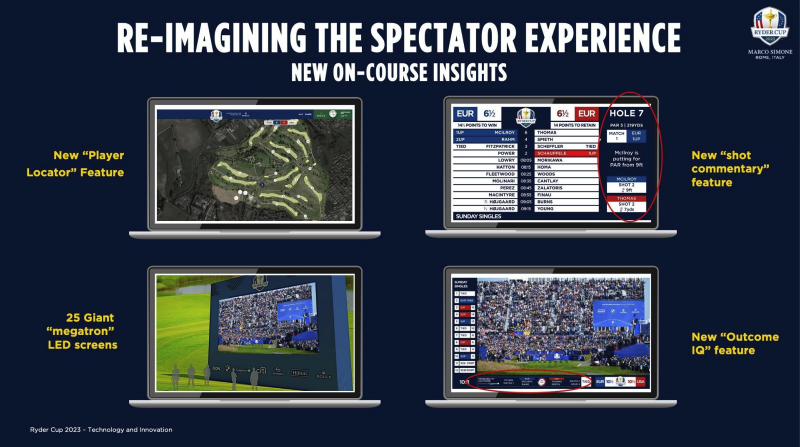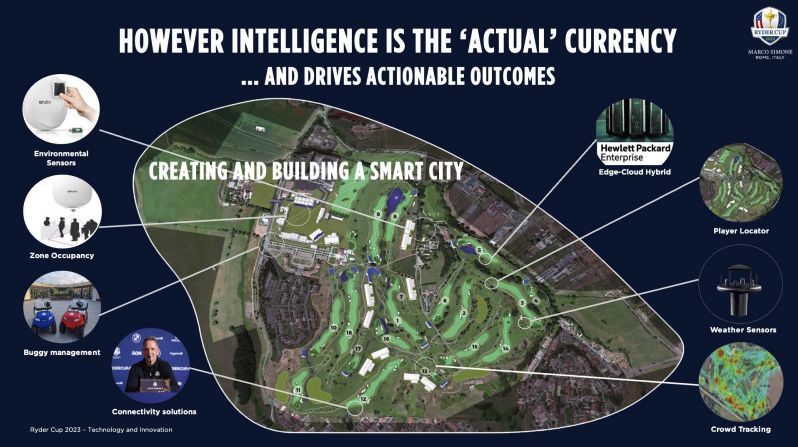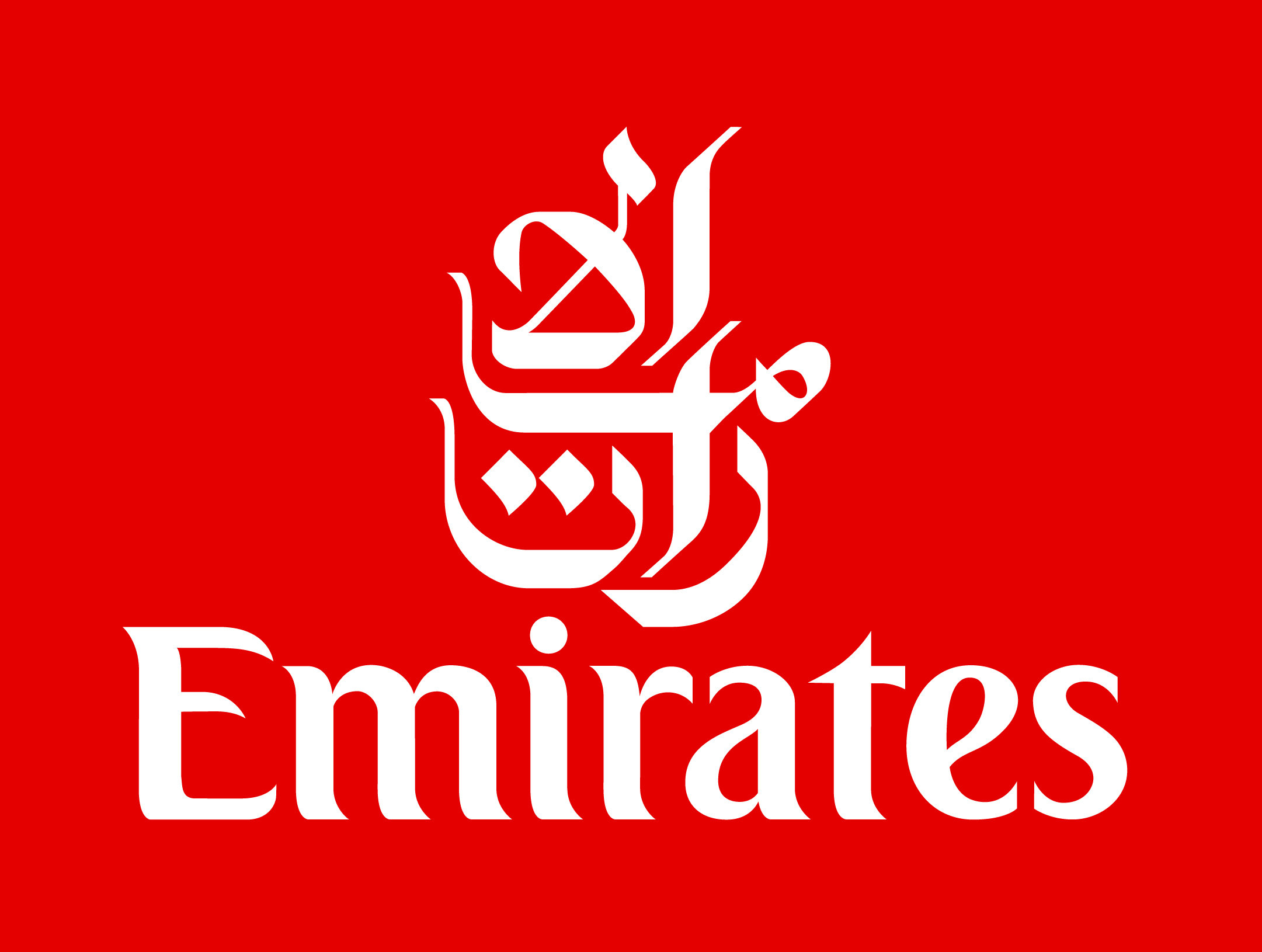The biennial Ryder Cup, founded in 1927, is one of the landmark events in global sport. The 2023 match, organised by Ryder Cup Europe, attracted ticket applications from 140 different countries, and a record-breaking 272,000 spectators descended on Rome.
Powered by a rich amphitheatre of technology to match the modern-day spectator’s expectations of an inspirational yet ubiquitous, frictionless and reliable technology experience, the 2023 edition delivered the most digitally connected Ryder Cup to date.
Proving to be one of the most intelligent sporting experiences ever, against Rome’s rich historical backdrop, the 2023 Ryder Cup brought innovation to the heart of the eternal city, unequivocally setting the bar for the US Ryder Cup in 2025.
Unlike other sports where the action takes place in a single stadium, pitch or track, golf has the added challenge of connecting 18 fields of play, spread across many acres, to the swarms of spectators eager to keep up with all the action as it unfolds across a vast competitive landscape.
In order to achieve this in the Italian capital, Ryder Cup Europe built a mini smart city from scratch in the middle of the countryside to bridge the gap between armchair fans and on-course spectators.

Technology Strategy
In my mind, the genesis of technology for any Ryder Cup is based on three Es – Engagement, Excitement and Experience. ENGAGEMENT through relevant and personalised services to every attending spectator, generating EXCITEMENT through the delivery of course features that get fans closer to the action, while ensuring their EXPERIENCE of the Ryder Cup is one of the best sporting events they have ever attended.
This is obviously quite an ask, yet I believe we achieved it in Rome. In 2025 and 2027 we will aim to do the same through five core pillars and with the help of our principle technology partners, Capgemini, SAP, Hewlett Packard Enterprises, Motorola Solutions and T-Mobile (2025 only), each bringing deep strong capabilities and extensive expertise to help shape best-in-class technology solutions.
Pillar #1: Re-imagining the spectator experience
Great connectivity, enhanced navigation and interactive communications optimise the tournament experience, enabling fans to spend more time watching golf, soaking up the atmosphere and immersing themselves in the unique experience. Our new technology features are likely to include:
- Some of the largest LED screens in the industry, screens visible from every point on the course, and more than 500 digital TVs
- Launching AI-enhanced Outcome IQ providing probability stats on likely hole, session and match winners, as well as AI-generated shot commentary on every shot, and match statistics
- Shot-by-shot tracker on the new Ryder Cup website and mobile app, with interactive 3D visuals and other engaging features

Pillar #2: The intelligent course
The technology solutions deployed will ensure the 2025 Ryder Cup will be the most data-driven ever, by implementing a visualised intelligence platform, with multiple data sources, which will enable staff and fans to make smarter real-time decisions.
Examples include a new Customer Data Platform which will unify fan data from multiple sources to create a single fan profile which will help the Ryder Cup gain a deeper understanding of audience behaviour, drive engagement and deliver personalised experiences at scale, while paving the way for future AI-driven innovation and a globally-connected fan journey.
Pillar #3: Improving connectivity
At Bethpage in September, the Ryder Cup will leverage leading networking infrastructures with both Public and Private 5G, as well as deploy leading Wifi solutions to provide possibly the most sophisticated and hybrid connectivity for any large-scale sporting event to date.
The infrastructure will be built to support more than 50,000 concurrent devices at daily peak, and over 100Terabytes of data across the week, one of the highest volumes of data for any single venue sporting event. Importantly, the infrastructures will also be used to generate multiple data sources to provide insight on crowd movements, identifying behaviours in how content is consumed and regulate connectivity to ensure levels of access are maintained throughout the course.
Pillar #4: Creating operational efficiency
The Ryder Cup is a golf tournament delivered at scale, and the technology deployed needs to be efficient and effective. The 2023 edition benefited from the first ever ‘intelligence wall’ in sport, managing both tournament operations and the fan experience. This enabled proactive monitoring of the technology across the course and ensured its robust deployment. Creating this operational efficiency draws on automated AI applications to predict technology issues before they occur, and mitigate the risk of service downtime.
Also for 2025 and 2027, we will adopt AI-powered video security technology to provide intelligence and insight on crowd behaviours and analytics, including stand occupancy and queue lengths which will help keep spectators, staff and athletes safe.

Pillar #5: Leveraging the most sustainable technology possible
Ryder Cup Europe set out to make 2023 the most sustainable Ryder Cup ever, and I have no doubt the 2025 and 2027 editions will follow suit. Likely innovations will include cloud-based technology and smart purchasing, avoiding single-use technology wherever possible, environment IOT sensors for operational efficiency, infrastructure with smart power control to minimise electricity usage and maximise wireless technologies to reduce cabling, and conceivably, the ability to solar-power key components of infrastructure, reducing the need for carbon-fuelled generators in remote sections of the course.
Everything will be measured and monitored by a new enhanced sustainability dashboard which will track the carbon footprint of our IT infrastructure in real time and graphically report carbon impacts, power consumption and energy costs.
The Ryder Cup will continue to be the bedrock of technological innovation, and its legacy will be the adoption of similar technology deployed on professional golf tournaments and at golf clubs around the globe.





